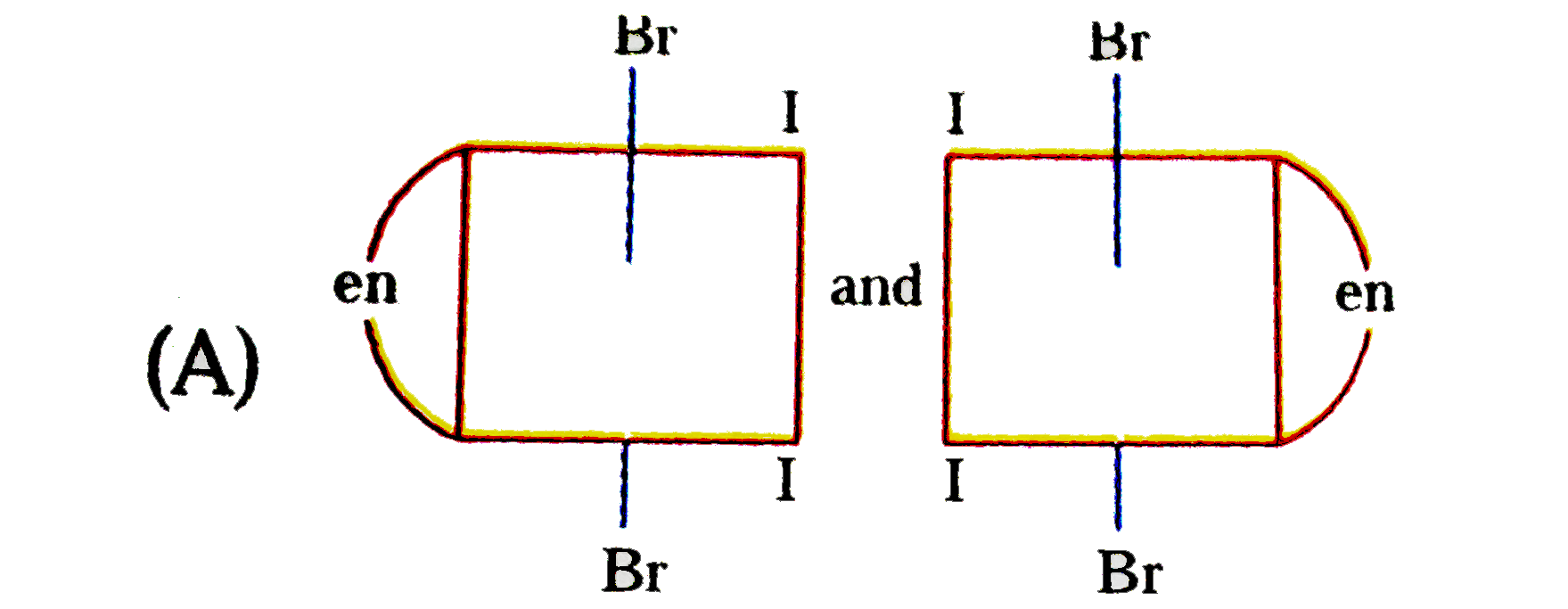Statement-1:[Co(en)(NO2)2(pn)]+ ion exists in four geometrical forms : two are cis and two are trans.
Statement-2:en (symmetrical ligand) and pn (unsymmetrical ligand) are etylene diamine and 1, 2-diamino propane repectively forming complex of the type M(AA)(AB)a2.
Statement-1 is True, Statement-2 is True , Statement-2 is a correct explanation for Statement-1.
Statement-1 is True, Statement-2 is True, Statement-2 is NOT a correct explanation for Statement-1.
Statement-1 is True, Statement-2 is False.
Statement-1 is False, Statement-2 is True.
The correct Answer is:A
Step by step video, text & image solution for Statement-1:[Co(en)(NO_(2))_(2)(pn)]^(+) ion exists in four geometrical forms : two are cis and two are trans. Statement-2:en (symmetrical ligand) and pn (unsymmetrical ligand) are etylene diamine and 1, 2-diamino propane repectively forming complex of the type M(A A)(AB)a_(2). by Chemistry experts to help you in doubts & scoring excellent marks in Class 12 exams.
Updated on:21/07/2023Topper's Solved these Questions
- COORDINATION COMPOUNDSBook:GRB PUBLICATIONChapter:COORDINATION COMPOUNDSExercise:MULTIPLE OBJECTIVE TYPE QUESTION
Explore 130 Videos
- COORDINATION COMPOUNDSBook:GRB PUBLICATIONChapter:COORDINATION COMPOUNDSExercise:COMPREHENSION 1
Explore 3 Videos
- COORDINATION COMPOUNDSBook:GRB PUBLICATIONChapter:COORDINATION COMPOUNDSExercise:G. Organometallic Compounds, Synergic Bonding
Explore 52 Videos
- CHEMICAL KINETICSBook:GRB PUBLICATIONChapter:CHEMICAL KINETICSExercise:Subjective Type
Explore 63 Videos
- D-BLOCK ELEMENTSBook:GRB PUBLICATIONChapter:D-BLOCK ELEMENTSExercise:Subjective Type
Explore 18 Videos
Similar Questions
Statement 1 : [CrCl2(en)2]Cl shows geometical isomerism and is heteroleptic complex.
Statement 2 : It exists as cis and trans forms and have different type of ligands.
View SolutionStatement-1: In [Co(en)3]Cl3, the coordination number of Co3+ ion is 3.
Statement-2: 'en' is a bidentate ligand.
View Solution
Knowledge Check
The complex ion . [M(en)Br2I2]−1, has two optical isomers. Their correct configurations are:
A B
B C
C D
D
Statement-1: The cis−[CoCl2(en)2]+ has two enantiomers.
Statement-2: en in a bidentate mono anion.AStatement-1 is True, Statement-2 is True , Statement-2 is a correct explanation for Statement-1.BStatement-1 is True, Statement-2 is True, Statement-2 is NOT a correct explanation for Statement-1.CStatement-1 is True, Statement-2 is False.DStatement-1 is False, Statement-2 is True.Statement-1: The cis−[CoCl2(en)2]+ has two enantiomers.
Statement-2: en in a bidentate mono anion.AStatement-1 is True, Statement-2 is True , Statement-2 is a correct explanation for Statement-1.BStatement-1 is True, Statement-2 is True, Statement-2 is NOT a correct explanation for Statement-1.CStatement-1 is True, Statement-2 is False.DStatement-1 is False, Statement-2 is True.
Statement-1: In [Co(en)3]Cl3, the coordination number of Co3+ ion is 3.
Statement-2: 'en' is a bidentate ligand.
View SolutionStatements-1: Linkage isomerism arises in coordination compounds containing amibidentate ligand.
Statement-2: Ambidentate ligand has two different donor atoms.
View SolutionStatement-1: [Co(en)3]3+ show stereoisomerism.
Statement-2: EAN value of [Co(en)3]3+ is 36.
View SolutionStatement-1: [Co(en)3]3+ show stereoisomerism.
Statement-2: EAN value of [Co(en)3]3+ is 36.
View SolutionStatement-1: Charge on the complex of ferric ion with EDTA is minus one.
Statement-2: EDTA is a hexadentate ligand.
View Solution

